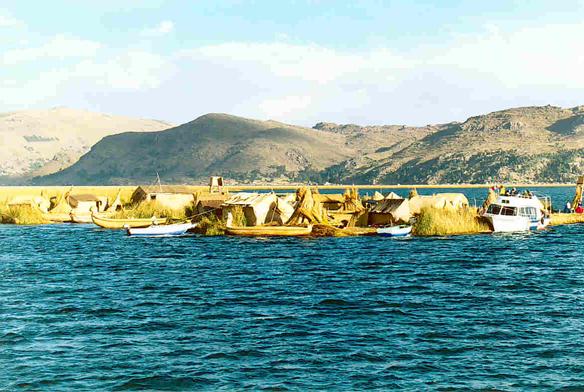|
The indigenous Uros people have been building
floating islands [islets] made out of totora reed on the shores of Lake Titicaca, near Puno, Peru,
for more than 1000 years.
They are self-sufficient, surviving by fishing and, more recently, from the sale of handicrafts to tourists.
In the past few years, however, marked climatic changes are threatening to upset the delicate balance of nature in the region.
On a recent visit to Puno, an acquaintance of mine, the Uro teacher Jaime Coila Lujano, told me that local birds used to know where to locate their nests on the
floating islets. During wet weather, when the lake was high, they would place their nests high on the reeds;
conversely, when the lake was low, they would
place their nests at much lower elevations.
Jaime mentioned that in the past few years the climate has been largely unpredictable,
with the lake level fluctuating more than usual, often out of sinc with the season. He observed that the birds appear
to be at a loss as to where to place their nests.
Thus, we see that climate change is all encompassing and has a global reach.
| ||
|
|
